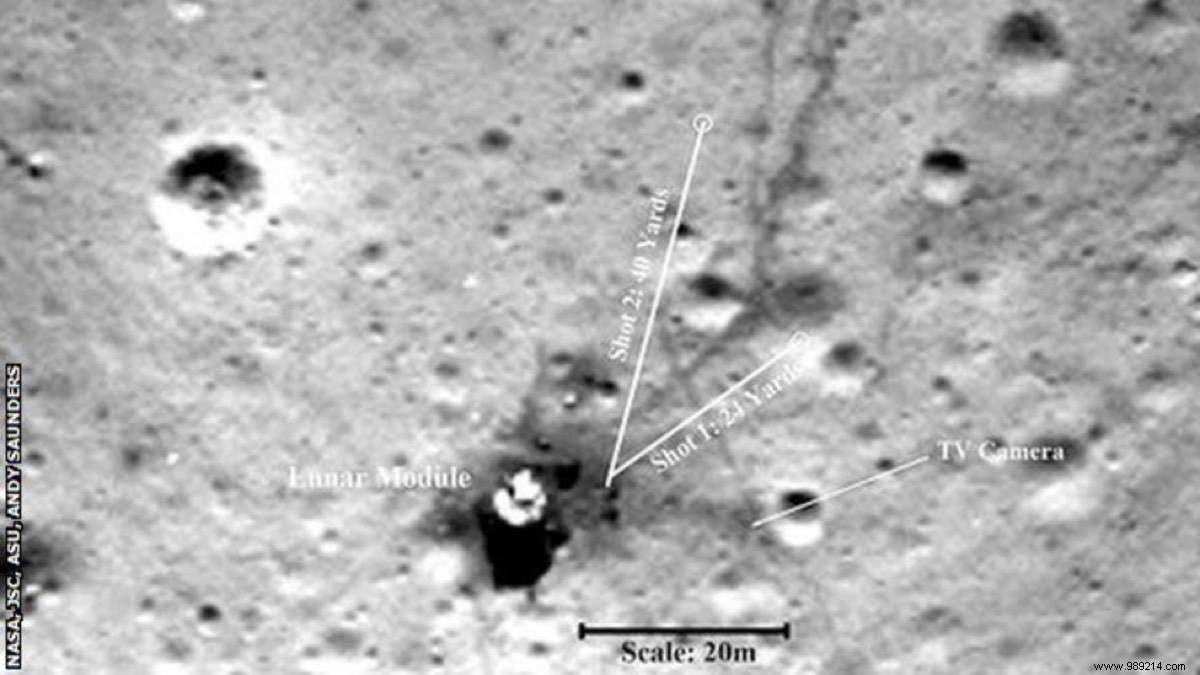Fifty years ago, astronaut Alan B. Shepard made history by hitting two golf balls on the Moon during the Apollo 14 mission. Enthusiasts have debated for decades how far the second bullet travels. We finally have the answer.
Alan Bartlett Shepard Jr. is known for being the first American to travel in space (Mercury program, 1961) and the fifth man to walk on the Moon (Apollo 14, in 1971). As part of this mission – the third successful moon landing by the United States – astronauts Shepard and Mitchell explore the Fra Mauro geological formation, located west of the large Fra Mauro crater.
That said, during their second spacewalk, operated towards the Cone Crater, and after loading nearly 45 kg of lunar rock samples into the LEM, Al Shepard grants a small pleasure:he pulls two golf balls out of his pocket, mounts a 6-iron head on the telescoping shaft of a sample collector, and attempts... a moon swing.
It goes without saying that playing golf on the Moon in an extra-vehicular suit is a complicated undertaking. Also Shepard only uses one hand (the right).
The astronaut then misses the ball on his first two attempts, but the third is the good one, with a ball that flies away about twenty meters. She will then be found by Mitchell in a nearby crater. The astronaut finally tries a last shot, and propels a second bullet "miles and miles", he will then say jokingly. In reality, this ball has never been found, and until now, the distance traveled by this ball was subject to debate.
At least, so far. A few months ago, imaging specialist Andy Saunders tracked down the famous golf ball by digitally reworking scans of the original film captured during the mission. Saunders, who worked with the United States Golf Association (USGA) to commemorate Shepard's historic achievement, announced his findings in a Twitter thread.
According to his analysis, the bullet would not have traveled "miles and miles", but about thirty-six meters . But make no mistake, the mere fact that Shepard managed to get that ball off the ground this far is very impressive!


For your information, Saunders then calculated that if a professional golfer hit a golf ball on the Moon at 298 kilometers per hour – speed recorded in 2016 by Jimmy Walker during the PGA Championship – at a proper angle of 45 degrees, his ball could travel an impressive distance 4.22 kilometers, potentially remaining in the air for a full minute.